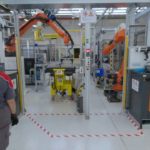April 24, 2013, the Rana Plaza, an eight-floors crumbling building that housed a bank, shops, apartments and some textile factories, collapsed on itself, killing 1,135 people and causing more than 2,500 injured.
[subscriptionform]
[level-european-affairs]
The building was located in an industrial suburb of Dhaka, the capital of Bangladesh and since then his name is reminiscent of the worst disaster ever happened in the history of the textile industry. The victims were almost solely workers. The day before the crash some cracks had opened on the walls and the bank, as well as shops, had been closed for safety reasons. The owners of textile plants did not accept, however, to stop production and forced the working men and women to go to work. The next morning, at the peak of the influx, the walls crumbled and the palace crumpled in on itself, burying thousands of workers. The last four floors of the building, as it was learned later, had been raised illegally over the years.
The disaster directly called into question well known Americans and Europeans clothing brands, who subcontracted their production to local textile factories to save on labor costs, regardless of the poor condition imposed on the workers. Complaints, official engagements, international awareness campaigns, agreements between producers to improve workers conditions followed, but little was really done. In March 2014, only 7 out of the 29 brand involved were actually financing a solidarity fund in favor of the families of the victims.
Two and a half years after the massacre, on December 21, Bangladesh justice has finally called 41 people for trial. The accused will have to answer for one of the worst industrial disasters in history and might be sentenced to life imprisonment. The worst position is to Sohel Rana, the owner of Rana Plaza, accused of ordering the workers of the factories to go back to work, even though the inspection of the previous day had certified that the building was not safe.
Mr. Rana is the only defendant currently in custody. Sixteen are free on bail and for the other 24, now unreachable, orders of arrest have been issued on last Sunday.
The textile sector is still critical to the weak economy of Bangladesh, with exports generating a turnover of over 25 billion dollars. 60 percent of the production takes the road of Europe, supplying the warehouses of our clothing stores. The massacre of the Rana Plaza did not lead, however, to a significant improvement of working conditions in the textile industry, where accidents continue to occur, even if on a smaller scale. The producers have not lived up to their initial promise and continue to take advantage of a labor market that offers very low wages and significant profit margins.
The betrayal of the commitments was also certified by a recent study by the New York University, which showed that only 8 of the 3425 garment factories inspected in the country, have actually introduced improvements to raise standards of safety. Create a safer environment for workers, it says the report, is not impossible but it requires large investments in terms of time and money and the collaboration of all brands and governments involved.
At the moment, a paradigm shift seems unlikely while it seems real the risk that brands could decide to move the textile production to countries where they would be subject to fewer controls. A potentially lethal paradox for the economy of Bangladesh.
Luca Marchesini
[/level-european-affairs]







